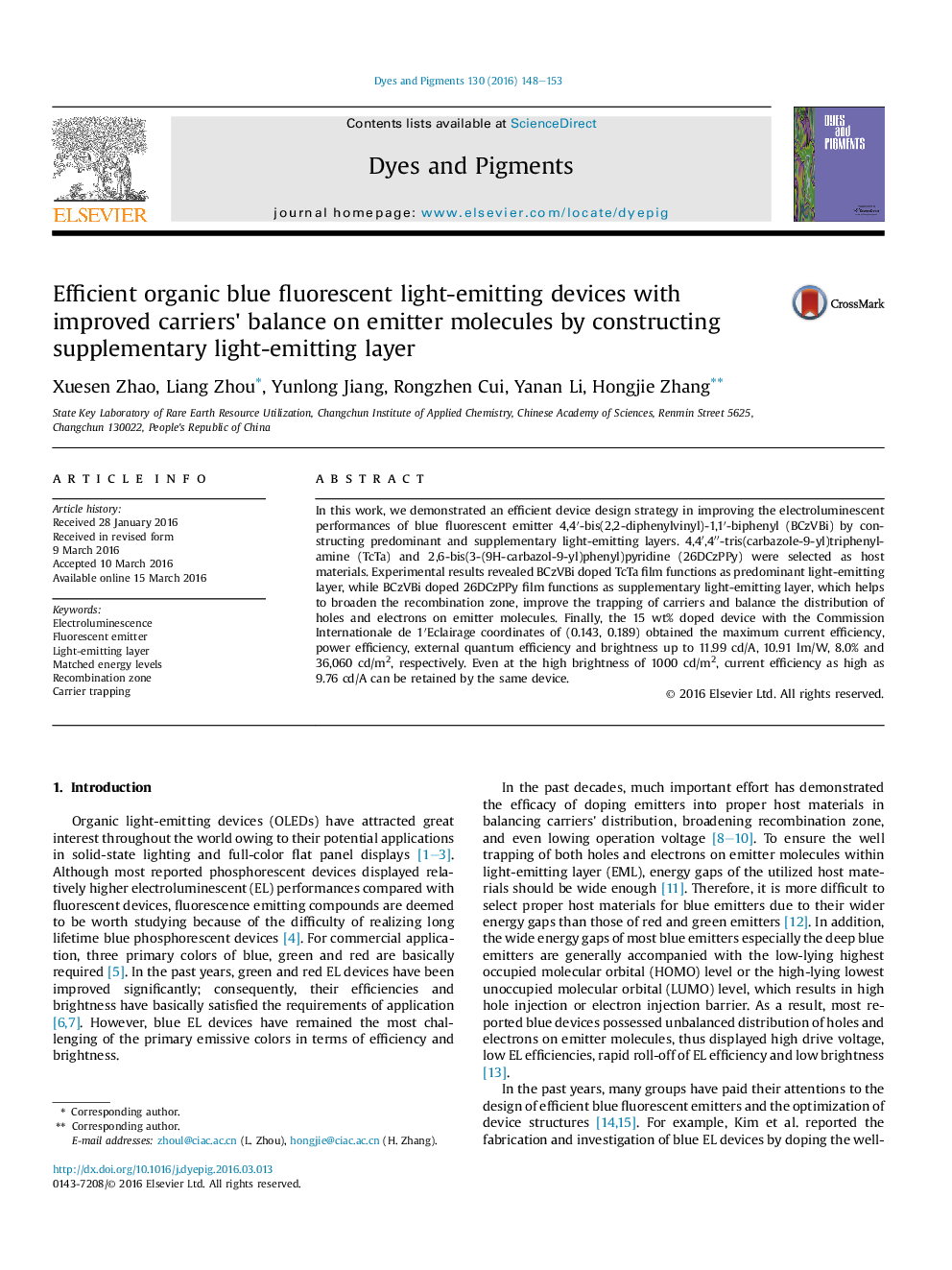| Article ID | Journal | Published Year | Pages | File Type |
|---|---|---|---|---|
| 175433 | Dyes and Pigments | 2016 | 6 Pages |
•Pure blue electroluminescent devices were designed and fabricated.•Matched energy levels help to facilitate the trapping of carriers.•The presence of supplementary light-emitting layer broadens the recombination zone.•Improved carriers' trapping suppresses the emission of host material.
In this work, we demonstrated an efficient device design strategy in improving the electroluminescent performances of blue fluorescent emitter 4,4′-bis(2,2-diphenylvinyl)-1,1′-biphenyl (BCzVBi) by constructing predominant and supplementary light-emitting layers. 4,4′,4″-tris(carbazole-9-yl)triphenylamine (TcTa) and 2,6-bis(3-(9H-carbazol-9-yl)phenyl)pyridine (26DCzPPy) were selected as host materials. Experimental results revealed BCzVBi doped TcTa film functions as predominant light-emitting layer, while BCzVBi doped 26DCzPPy film functions as supplementary light-emitting layer, which helps to broaden the recombination zone, improve the trapping of carriers and balance the distribution of holes and electrons on emitter molecules. Finally, the 15 wt% doped device with the Commission Internationale de 1′Eclairage coordinates of (0.143, 0.189) obtained the maximum current efficiency, power efficiency, external quantum efficiency and brightness up to 11.99 cd/A, 10.91 lm/W, 8.0% and 36,060 cd/m2, respectively. Even at the high brightness of 1000 cd/m2, current efficiency as high as 9.76 cd/A can be retained by the same device.
Graphical abstractHighly efficient blue electroluminescent (EL) devices were designed and realized by doping fluorescent emitter 4,4′-bis(2,2-diphenylvinyl)-1,1′-biphenyl (BCzVBi) into 4,4′,4″-tris(carbazole-9-yl)triphenylamine (TcTa) and 2,6-bis(3-(9H-carbazol-9-yl)phenyl)pyridine (26DCzPPy) films as predominant and supplementary light-emitting layers, respectively.Figure optionsDownload full-size imageDownload as PowerPoint slide
